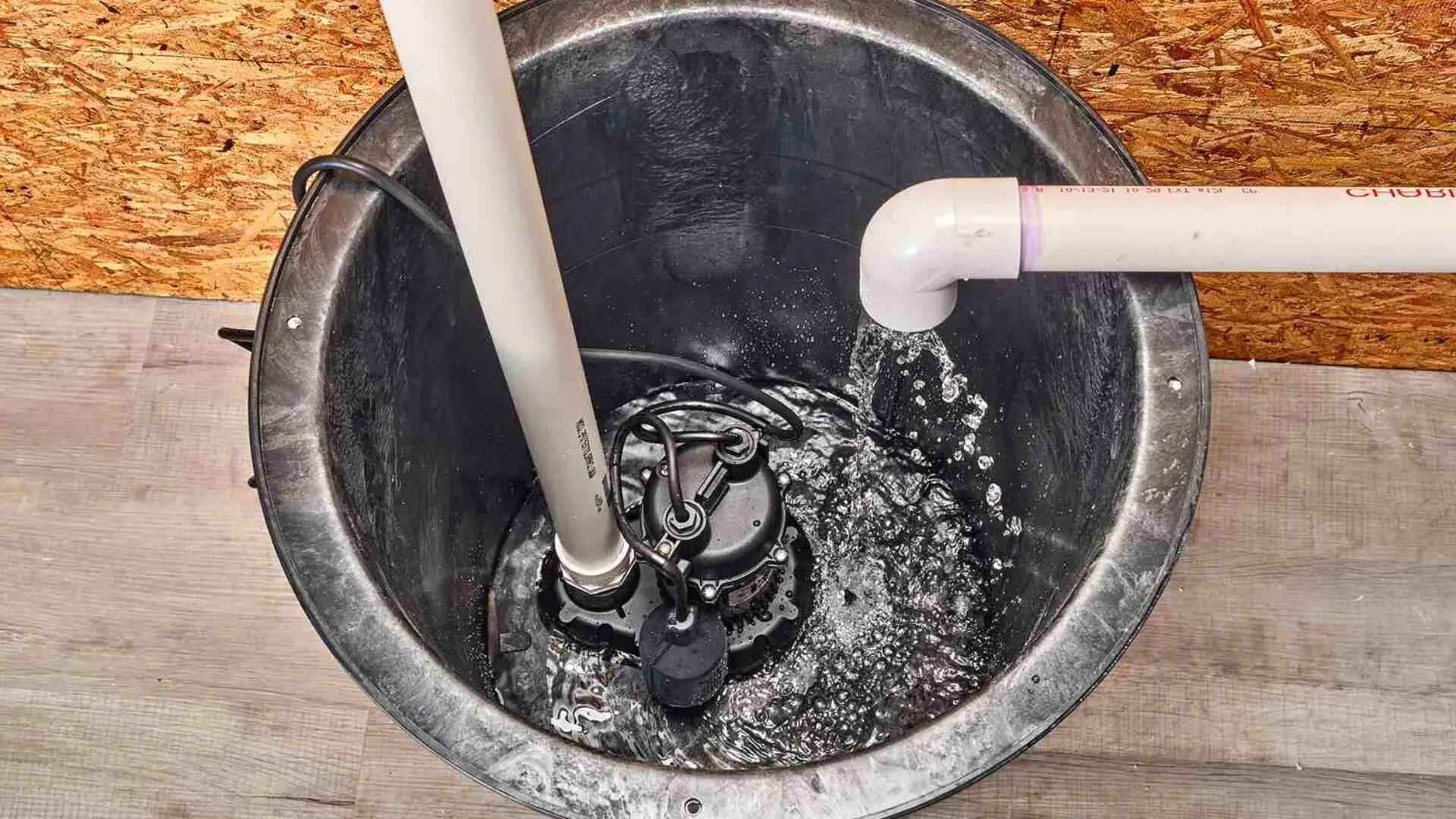Effortless Methods to Care for a Sump Pump
Effortless Methods to Care for a Sump Pump
Blog Article
Listed here on the next paragraphs you can get a good deal of outstanding information and facts when it comes to Keep Your Sump Pump Clean, It'll Keep You Dry.

Sump pumps are essential elements in lots of homes, specifically in areas prone to flooding or too much wetness. They aid protect against water damage by successfully getting rid of excess water from basements or crawl spaces. Nonetheless, like any other home appliance, sump pumps require normal upkeep to ensure they work effectively when needed one of the most. Cleansing your sump pump is an essential part of its upkeep, and recognizing just how to do it appropriately can conserve you from pricey repair work and prospective calamities.
Introduction
Maintaining a tidy sump pump is vital for its proper performance and durability. Neglecting this crucial job can lead to obstructions, breakdowns, and eventually, water damage to your property. Therefore, learning exactly how to clean a sump pump is important for home owners who rely upon these gadgets to maintain their basements dry and safeguarded.
Signs of a Dirty Sump Pump
Recognizing when your sump pump needs cleaning is vital for protecting against potential malfunctions. Some usual indicators that show a dirty sump pump consist of unusual noises during procedure, reduced water flow, and noticeable particles in the pit. If you see any one of these signs, it's vital to clean your sump pump immediately to prevent any type of additional issues.
Planning for Cleansing
Before you start cleaning your sump pump, it's necessary to take some safety and security precautions. Begin by shutting down the power to the pump to prevent any kind of electric crashes. Additionally, put on proper protective gear, such as handwear covers and safety glasses, to secure on your own from dust, particles, and potential pathogens.
Recognizing the Sump Pump
Prior to diving right into the cleansing process, it's vital to have a basic understanding of how a sump pump functions. Normally mounted in a pit or basin below the cellar floor, a sump pump consists of several crucial elements, including a pump, a float button, and a discharge pipe. When water gathers in the pit, the float switch activates the pump, which after that pumps the water out with the discharge pipeline, away from the building's foundation.
Detailed Guide to Cleansing a Sump Pump
Shutting down the Power
Begin by detaching the power supply to the sump pump to prevent any kind of accidents while cleaning.
Looking For Correct Performance
Before reinstalling the pump, do a fast examination to ensure that the float switch triggers the pump properly. Pour some water into the sump pit and observe the pump's operation. If whatever is working appropriately, you can rebuild the pump and reconnect the power supply.
Getting Rid Of Particles and Dirt
Use a container or a scoop to eliminate any kind of visible particles, dust, or sediment from the sump pit. Dispose of the particles effectively to stop it from clogging the pump or the discharge pipeline.
Cleaning up the Pump and Float Switch
As soon as the pit is clear of debris, thoroughly get rid of the pump from the pit. Examine the pump and the float button for any signs of damage or wear. Utilize a soft brush or cloth to clean the surfaces and remove any collected crud.
Purging the System
After cleaning up the pump and float button, flush the sump pit with clean water to eliminate any type of continuing to be dirt or debris. This will certainly assist make sure that the pump operates efficiently and effectively.
Maintenance Tips to Maintain Your Sump Pump Clean
Along with routine cleaning, there are a number of maintenance suggestions you can comply with to maintain your sump pump in ideal condition:
Conclusion
Cleaning your sump pump is a critical facet of its upkeep and makes certain that it runs properly when you need it the most. By adhering to the steps described in this guide and integrating routine maintenance right into your routine, you can expand the life expectancy of your sump pump and secure your home from water damages.
6 STEPS ON HOW TO CLEAN A SUMP PUMP PROPERLY
UNDERSTANDING SUMP PUMPS
Your sump pump plays a crucial role in protecting your home by managing and removing excess water. It primarily functions as a “shield”, guarding your basement against the damaging effects of water accumulation. The pump is housed in a sump pit in the lowest part of your basement, and its job is to pump out any water that collects there.
During heavy rainfalls or when snow melts rapidly, water can infiltrate your basement, posing potential risks like flooding, structural damage, and harmful mold growth. Here, the sump pump springs into action, pumping out the intruding water and directing it away from your home.
SAFETY FIRST
Before cleaning, remember to prioritize safety. Disconnect the sump pump from the power source to prevent any accidental electric shocks. Also, wear sturdy gloves to protect your hands from any sharp or dirty components within the pump.
REMOVE THE SUMP PUMP
After ensuring your safety, the next step is to remove the sump pump from its pit. Doing this might require careful maneuvering as you don’t want to damage any pump components. Once removed, clean the sump pit to remove any accumulated debris or sludge.
INSPECT THE PUMP
Inspect the pump for any visible signs of wear or damage. Check the power cord, float switch, and impeller housing. If any components look worn out or damaged, consider replacing them to ensure optimal performance.
CLEAN THE PUMP
Thoroughly clean the pump with warm, soapy water. Make sure to rid it of any dirt, gravel, or other debris that might impede its performance. You can use a toothbrush to clean the small, hard-to-reach parts of the pump.
REINSTALL THE SUMP PUMP
Reinstall the pump into the sump pit Make sure it’s positioned correctly to remove the water effectively Once it’s back in place, reconnect it to the power source TEST THE PUMP
Finally, pour some water into the pit to ensure the pump works correctly. It should start automatically and begin pumping out the water; if it doesn’t, check the power source and the positioning of the pump.
Remember, while cleaning your sump pump is an essential part of home maintenance, hiring a professional plumber for a thorough inspection and cleaning at least once a year is also important. This will ensure that your pump is in optimal condition, ready to protect your home from potential water damage.
BEST PRACTICES FOR CLEANING SUMP PUMP DISCHARGE PIPES
Regular Inspection: Regularly inspect your discharge pipes, especially during heavy rainfall or snowmelt periods. Look for any signs of blockage or damage. Early detection of problems can prevent serious issues down the line. Periodic Cleaning: Over time, sediment and debris can accumulate in the discharge pipes, impeding the flow of water. Regular cleaning helps keep the pipes clear and functioning efficiently. You can use a high-pressure water jet to effectively clean the pipes. Insulation During Winter: In colder climates, discharge pipes can freeze, blocking the outflow of water. Protect your discharge pipes from freezing temperatures by insulating them with foam pipe insulation. This will ensure the sump pump can continue to discharge water even in freezing conditions. Proper Positioning: The discharge pipe should be positioned to direct water away from your home’s foundation. Improper positioning can lead to water seeping back into the basement. Ensure the pipe is long enough and angled correctly. Installation of a Check Valve: A check valve prevents water from flowing back into your sump pit after the pump has pushed it out. Installing a check valve helps maintain the efficiency of your sump pump and reduces the risk of flooding. Minimize Pipe Turns: Every curve or turn in the discharge pipe can decrease the efficiency of water flow. By minimizing turns and bends in your discharge pipe, you can increase the efficiency of your sump pump. https://www.fullspeedplumbing.com/how-to-clean-a-sump-pump-properly9999/

We were shown that editorial about through an acquaintance on another web page. Enjoyed reading our blog entry? Please share it. Help somebody else find it. Thanks a bunch for being here. Kindly check up our website back soon.
Visit My Site Report this page